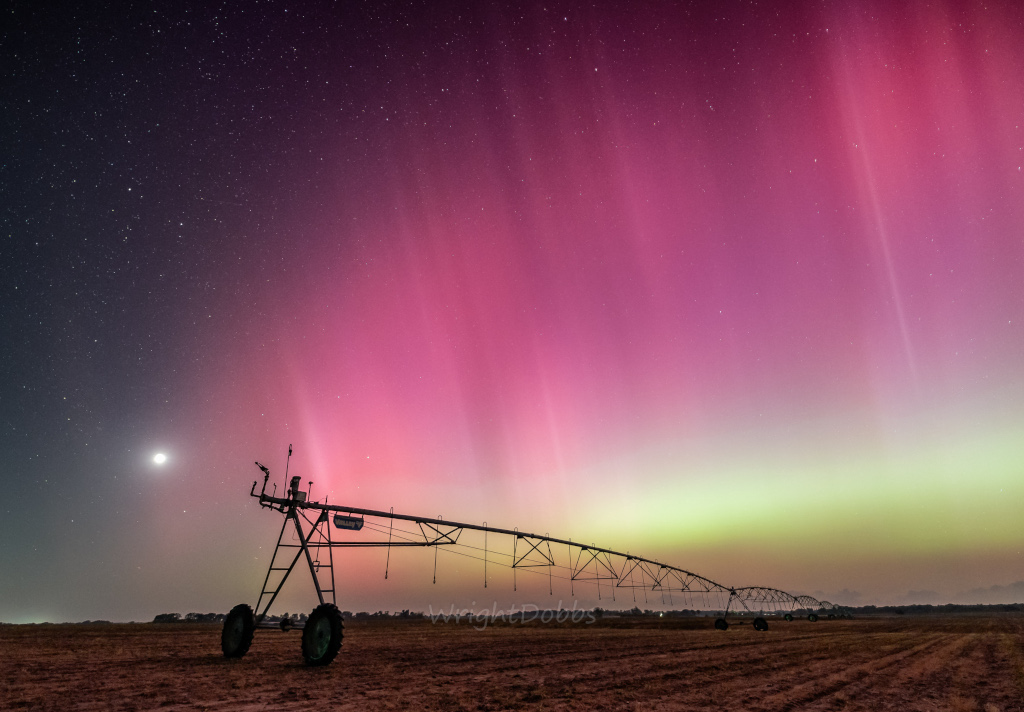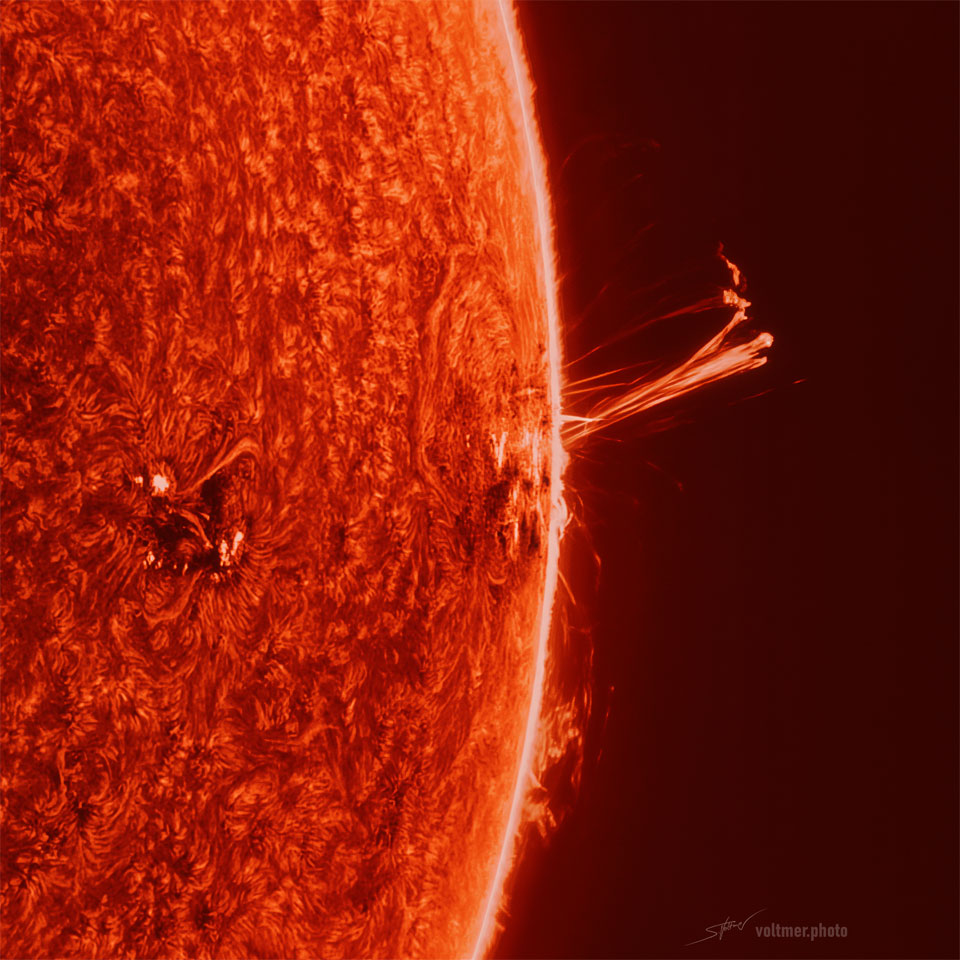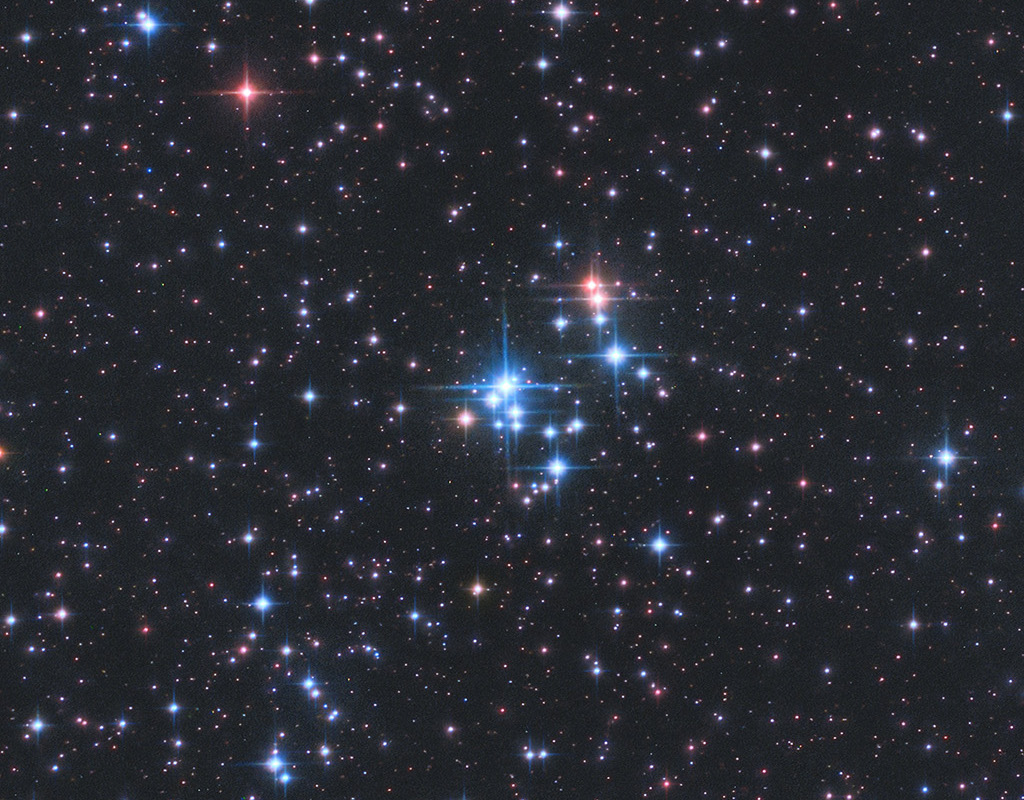Nombre total de pages vues
16/05/2024
SANTé/MEDECINE - Virus et bactéries mortels - Neisseria meningitidis le principal responsable
NUCLEAIRE - Comment survivre à l'explosion nucléaire ? Combien de temps après l'annonce ?
ASTRONOMY - Aurora Georgia
2024 May 16
Image Credit & Copyright: Wright Dobbs
Explanation: A familiar sight from Georgia, USA, the Moon sets near the western horizon in this rural night skyscape. Captured on May 10 before local midnight, the image overexposes the Moon's bright waning crescent at left in the frame. A long irrigation rig stretches across farmland about 15 miles north of the city of Bainbridge. Shimmering curtains of aurora shine across the starry sky though, definitely an unfamiliar sight for southern Georgia nights. Last weekend, extreme geomagnetic storms triggered by the recent intense activity from solar active region AR 3664 brought epic displays of aurora, usually seen closer to the poles, to southern Georgia and even lower latitudes on planet Earth. As solar activity ramps up, more storms are possible.
15/05/2024
SANTé/MEDECINE - Virus et bactéries mortels - Le staphylocoque doré terreur des hôpitaux
NUCLEAIRE - Comment survivre à une explosion nucléaire ? Différents dangers
ASTRONOMY - AR 3664 at the Sun's Edge
2024 May 15
Image Credit & Copyright: Sebastian Voltmer
Explanation: What did the monster active region that created the recent auroras look like when at the Sun's edge? There, AR 3664 better showed its 3D structure. Pictured, a large multi-pronged solar prominence was captured extending from chaotic sunspot region AR 3664 out into space, just one example of the particle clouds ejected from this violent solar region. The Earth could easily fit under this long-extended prominence. The featured image was captured two days ago from this constantly changing region. Yesterday, the strongest solar flare in years was expelled (not shown), a blast classified in the upper X-class. Ultraviolet light from that flare quickly hit the Earth's atmosphere and caused shortwave radio blackouts across both North and South America. Although now rotated to be facing slightly away from the Earth, particles from AR 3664 and subsequent coronal mass ejections (CMEs) might still follow curved magnetic field lines across the inner Solar System and create more Earthly auroras.
14/05/2024
ASTRONOMIE - Astres de la voie lactée - GJ 436b, une géante gazeuse
SANTé/MEDECINE - Anti-inflamatoires naturels - La camomille, en collyre contre la conjonctivite
NUCLEAIRE - Comment survivre à une explosion nucléaire - Qu'est-ce qu'une explosion nucléaire ?
ASTRONOMY - The 37 Cluster
2024 May 14
Image Credit & Copyright: Sergio Eguivar
Explanation: For the mostly harmless denizens of planet Earth, the brighter stars of open cluster NGC 2169 seem to form a cosmic 37. Did you expect 42? From our perspective, the improbable numerical asterism appears solely by chance. It lies at an estimated distance of 3,300 light-years toward the constellation Orion. As far as galactic or open star clusters go, NGC 2169 is a small one, spanning about 7 light-years. Formed at the same time from the same cloud of dust and gas, the stars of NGC 2169 are only about 11 million years old. Such clusters are expected to disperse over time as they encounter other stars, interstellar clouds, and experience gravitational tides while hitchhiking through the galaxy. Over four billion years ago, our own Sun was likely formed in a similar open cluster of stars.
ASTRONOMY - A Solstice Sun Tattoo
025 December 20 A Solstice Sun Tattoo Image Credit & Copyright : Marcella Pace Explanation: The word solstice is from the Latin fo...

-
2022 September 26 All the Water on Planet Earth Illustration Credit: Jack Cook, Adam Nieman, Woods Hole Oceanographic Institution ; Data ...
-
2025 May 11 The Surface of Venus from Venera 14 Image Credit: Soviet Planetary Exploration Program , Venera 14 ; Processing & Copyri...









